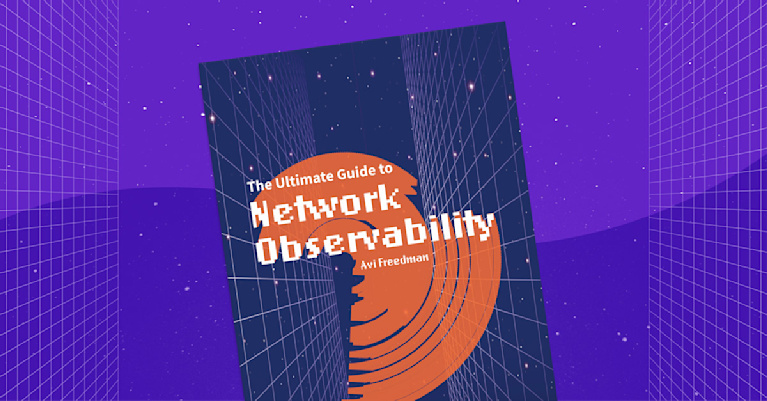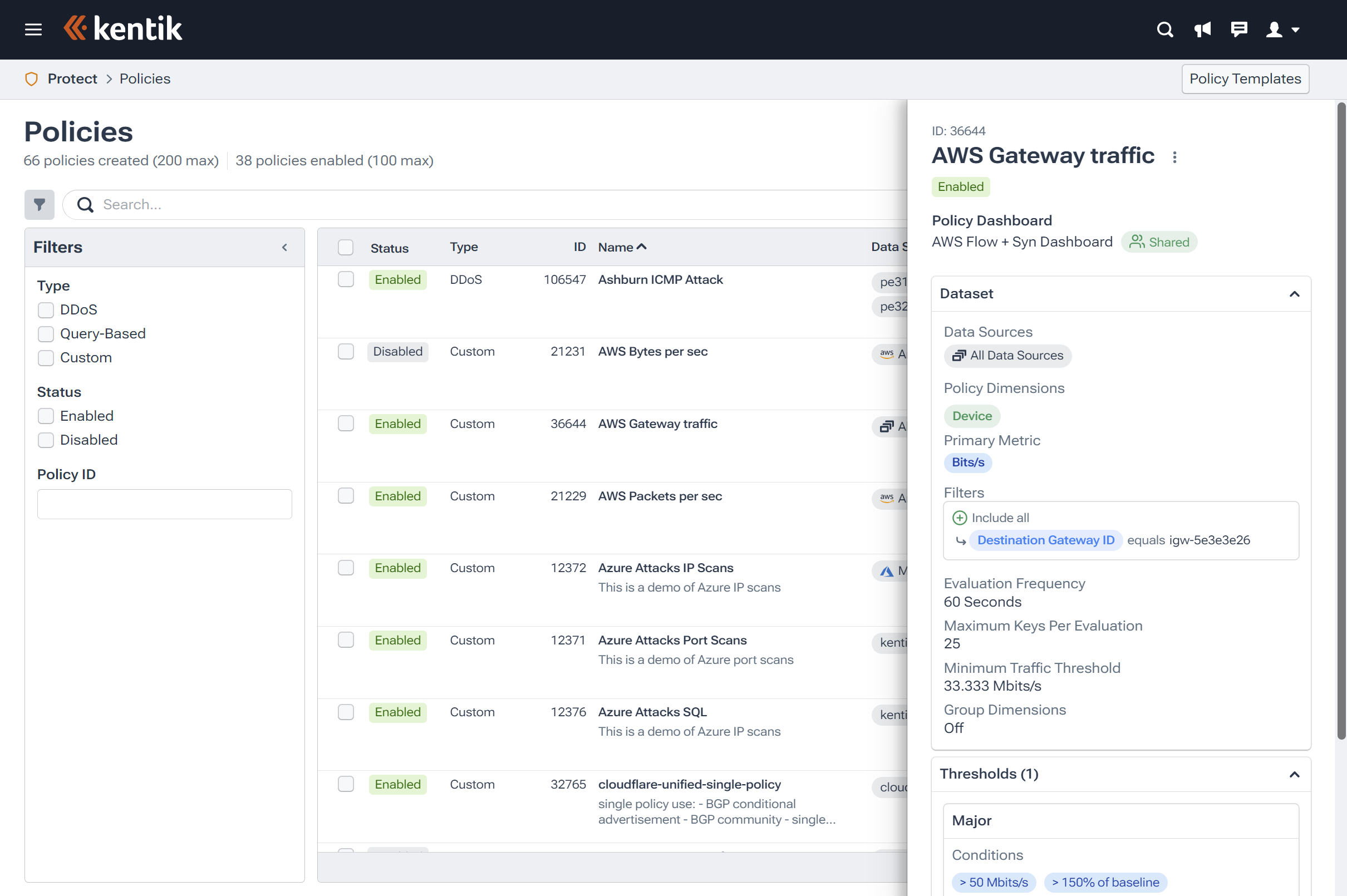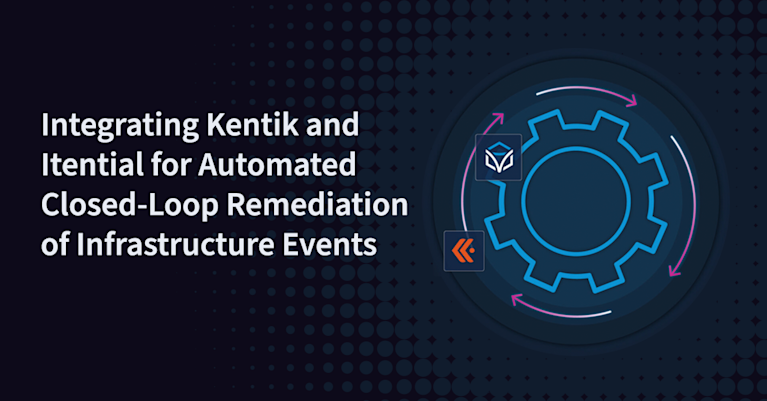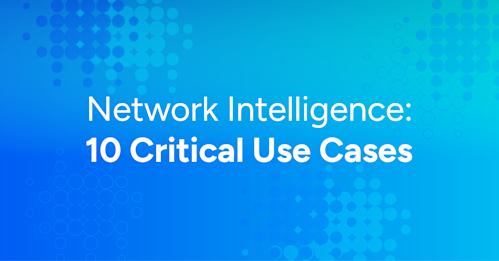Network Automation: Enhancing Performance and Reducing Complexity
Networks are vital to modern businesses, but managing them effectively becomes a challenge as they grow more complex. Network automation and hyperautomation, which blends automation with AI and machine learning, have emerged as crucial solutions. This article explores these technologies’ importance, types, benefits, and use cases and how Kentik’s network observability solutions can help businesses leverage their potential. From intelligent automation to the transformative power of hyperautomation, we explore these integral aspects of future-ready networking.
What is Network Automation?
Network automation is the process of automating the management and operations of a network infrastructure. It uses software to automate network components such as configuration, management, testing, deployment, and operations of physical and virtual devices. Modern IT departments leverage network automation platforms to improve network efficiency, ensuring high network service availability while reducing manual, repetitive tasks.
Why is Network Automation Important?
The importance of network automation stems from its role in modern network infrastructure management. Automation reduces human errors, minimizes downtime, and enhances the speed of network operations such as provisioning, configuration, and management, especially in complex cloud networks. For example, automation can significantly speed up the process of deploying configuration changes across multiple devices, thereby reducing downtime and ensuring network stability.
Which Primary Drivers Support the Need for Network Automation?
The need for network automation is primarily driven by two factors: the increasing complexity of modern networks and the necessity for operational efficiency. As networks expand and incorporate technologies like cloud and IoT, their management becomes increasingly complex. Automation provides a solution to this complexity, enabling more efficient network management, reducing errors, and enhancing operational efficiency.
How Does Network Automation Work?
Network automation works by integrating different network components, using command-line interfaces (CLI) or application programming interfaces (API) to control and manage devices. Network engineers implement network automation using these interfaces, scripting repetitive tasks and operations. This process could involve automating the setup of virtual networks, configuring new devices, or even automating responses to specific network events.
Intelligent Network Automation
Intelligent network automation leverages artificial intelligence and machine learning algorithms to automate complex network tasks. Unlike traditional network automation, intelligent automation goes further, offering predictive analysis, anomaly detection, and advanced data insights, making it a crucial element of intent-based networking.
Benefits of Network Automation
Network automation has many benefits that can dramatically enhance the performance and management of a network infrastructure. Here are some of the key benefits:
-
Improved Efficiency and Productivity: Network automation eliminates manual intervention in routine tasks, thereby improving efficiency and productivity.
-
Enhanced Network Reliability and Stability: By reducing the chances of human error, automation enhances the reliability and stability of network operations.
-
Scalability and Flexibility: Network automation provides the scalability and flexibility needed to manage growing or changing network infrastructures.
The definitive guide to running a healthy, secure, high-performance network

Types of Network Automation
Network automation can be achieved in different ways, depending on network resources, requirements, and the skills of network administrators. Let’s look at three main types:
Script-driven Network Automation
Involves writing scripts in programming languages to automate tasks. It’s flexible but requires coding knowledge.
Software-defined Networking
Creates a virtual, programmable network independent of the underlying hardware. It provides centralized control and quick configuration changes.
Intent-based Networking
Uses advanced analytics and machine learning to automate administration tasks. It’s the most advanced form of network automation, interpreting business objectives (the ’intent’) and automatically implementing network policies.
Components of the Network Automation Framework
Network automation operates within a framework comprising several interconnected components, each performing crucial network operations and infrastructure functions. Here, we’ll examine some of the most significant parts:
Configuration Management
Configuration management involves managing and controlling network device configurations to ensure they align with predefined policies and standards. This process typically includes tracking and documenting network configuration changes, which helps troubleshoot and ensures consistency across the network.
Network Monitoring, Event Management, and Alerting
These components collectively provide real-time visibility into network performance. They involve continuously tracking network traffic, identifying potential issues before they escalate, and sending alerts for any anomalies or breaches detected.

Device Provisioning and Management
This involves deploying and managing network devices, including physical and virtual appliances. Network automation makes it easy to provision new devices, update existing ones, and troubleshoot issues remotely.
Network Inventory and Documentation
Keeping track of all network devices and their statuses is essential for efficient network management. Automation ensures accurate and up-to-date inventory records and helps maintain comprehensive network documentation, thereby reducing the time and effort needed for network audits.
Network Testing and Verification
Network testing ensures that the network and its devices function as intended, while verification confirms that the network complies with predefined policies and standards.
Compliance and Security
Network automation helps enforce compliance with regulatory standards and implement security protocols consistently across the network. It automates the detection and remediation of non-compliant configurations and potential security threats.
Network Orchestration
This involves automating and coordinating complex sequences of network operations across multiple devices and systems, ensuring they work together seamlessly.
APIs and Integration
APIs are key in network automation, enabling software programs to interact with network devices and other software platforms. They facilitate integration with other IT systems and applications, enhancing the scope of automation.
Reporting and Analytics
Automated reporting provides valuable insights into network performance, usage trends, and potential issues. It helps network administrators make data-driven decisions.
Network Automation Challenges
In a recent webinar, “Network automation: Are you the only one not doing it?”, network engineers from Kentik and networking pundit Corey Quinn discussed several critical challenges impacting the adoption of network automation in today’s complex hybrid-cloud networks:
- Cultural and Skill Set Shifts: Network professionals must adapt to new roles, merging traditional network engineering with software development skills, fostering a significant cultural and skill set shift within IT departments.
- Heterogeneity of Network Environments: Automating in a world with a mix of old and new technologies, on-premises and cloud infrastructures, demands a sophisticated understanding of diverse network components and how they can be automated efficiently.
- Legacy Systems and Interoperability: Integrating automation with legacy systems and ensuring interoperability between different vendors and technologies remain significant hurdles.
- Testing and Reliability Concerns: The lack of standardized testing frameworks for network changes complicates the automation process, raising concerns about the reliability and stability of automated tasks.
- Resistance to Change: There’s a perceptible resistance within the network engineering community towards adopting automation, partly due to fear of obsolescence and the daunting task of upskilling.
- Identifying Value and Overcoming Skepticism: Demonstrating the tangible benefits of network automation to decision-makers and frontline engineers alike is crucial for overcoming skepticism and garnering support for automation initiatives.
You can watch the entire discussion, which also touches on future prospects for network automation—including the role of AI and machine learning in transforming network management and troubleshooting—below:
Network Automation and Network Orchestration Tools and Technologies
In the NetOps world, network automation tools, network orchestration tools, and the technologies they use play pivotal roles. These tools optimize and streamline network tasks, each serving a distinct function.
Network Automation Tools
Network automation tools streamline repetitive processes and minimize the risk of human error by automating various network tasks. These tasks range from configuration management to security enforcement and utilize different interfaces, platforms, and protocols. Scripting languages, software-defined networking (SDN) platforms, and APIs are commonly used to automate tasks and integrate with other systems. These tools not only save time and resources but also improve the reliability and efficiency of network management.
Network Orchestration Tools
Network orchestration tools take automation to the next level, enabling coordinated and managed execution of complex sequences of automated tasks across diverse network devices and systems. Orchestration ensures that these tasks work together seamlessly, adding a layer of sophistication to network management. A robust network automation and orchestration platform is the cornerstone for these activities, streamlining network management and operations.
There are a variety of leading automation and orchestration vendors in the market whose solutions integrate seamlessly with Kentik’s network intelligence platform, providing a holistic and efficient approach to network management:
-
Alkira - Alkira’s cloud networking solution unifies multiple clouds, sites, and users via an enterprise network built entirely in the cloud. With Alkira, there’s no new hardware to deploy, no software to download, and no cloud architecture to learn. The collaboration with Kentik can provide enhanced visibility into these multi-cloud networks.
-
Itential - Itential offers an enterprise-grade Network Automation Platform that assists organizations in their network automation journey, connecting seamlessly with any IT system, cloud, or network technology. Integrated with Kentik’s platform, Itential’s software can help ensure network compliance and simplify network management.
-
Gluware - Gluware provides an intelligent network automation suite for Global 2000 enterprises. Their code-free, multi-vendor solutions reduce business risk, lower costs, and increase efficiency, complementing Kentik’s network observability solution.
-
ZPE Systems - ZPE Systems focuses on infrastructure reliability and holistic security for medium to large enterprises and digital service providers. Their solutions eliminate human error and allow IT to easily manage, secure, and scale a resilient infrastructure. Integrating ZPE Systems with Kentik can provide a powerful network observability and automation combination.
-
Pliant - Pliant offers advanced API integration, orchestration, and automation solutions that simplify and streamline how operations and engineering teams build, deploy, and unify automation within their environments. Combined with Kentik’s observability platform, Pliant’s solutions can deliver extensive automation and seamless API integration capabilities.
-
NetBox Labs - NetBox Labs works with Kentik to enhance operational efficiency through integrated NetOps workflows. NetBox Labs’ network source of truth, NetBox, combined with Kentik’s network intelligence platform, enables context-aware navigation and integrated operational workflows, reducing incident resolution times and eliminating manual processes. Future integrations will include dynamic inventory management and contextual enrichment, providing a comprehensive approach to network automation and observability. Learn more about the NetBox Labs partnership here.
The integration of these automation and orchestration tools with Kentik’s platform enables organizations to capitalize on network automation, orchestration, and observability. This combined approach facilitates more efficient, reliable, and scalable network management. See our Integrations page for more about Kentik’s technology integrations.
Hyperautomation in Networking
As networks become more complex, incorporating various technologies, hyperautomation has emerged as a transformative approach to address this complexity. Hyperautomation combines advanced technologies like artificial intelligence (AI) and machine learning (ML) with traditional automation techniques to optimize and streamline network operations. It extends beyond automating individual tasks by creating an environment where digital and human elements work together harmoniously.
Why Hyperautomation?
Hyperautomation’s value lies in its ability to automate intricate tasks that previously required human intelligence. By leveraging AI and ML, hyperautomation can predict network behavior, respond autonomously to changes, and optimize network performance without human intervention. This leads to enhanced efficiency, significant cost savings, and improved customer experiences.
Implementing Hyperautomation
The successful implementation of hyperautomation involves assessing the current state of automation, identifying automation gaps, and developing a strategy to address these gaps. This process starts by identifying use cases that can deliver high impact through automation, such as network configuration, anomaly detection, and performance optimization.
After identifying the use cases, the appropriate hyperautomation tools and technologies are selected based on their features, capabilities, and alignment with the existing infrastructure. These tools and technologies are then rigorously tested in a controlled environment to validate their effectiveness.
An essential part of hyperautomation implementation is the emphasis on data quality and security. Strong data governance policies should be established to ensure data accuracy, consistency, and integrity. Robust security measures, such as encryption and access controls, are implemented to protect the network’s data.
As with any significant change, transitioning to hyperautomation requires a well-planned change management strategy. Employees need to be trained on the new processes and technologies, and a culture of continuous learning and improvement should be fostered.
Building a Cross-Functional Hyperautomation Team
A successful hyperautomation initiative requires a cross-functional team with diverse skills and expertise. This team should include roles such as an executive sponsor, project manager, business analyst, solution architect, automation engineer, and change manager. Engaging key stakeholders throughout the hyperautomation initiative is crucial to ensure buy-in and support.
Fostering a Culture of Innovation and Continuous Improvement
To achieve long-term success with hyperautomation, organizations need to cultivate a culture of innovation and continuous improvement. This involves promoting experimentation, learning from failures, measuring and monitoring progress, and providing ongoing training and development opportunities.
Monitoring Progress
The progress of a hyperautomation initiative is regularly measured and monitored using key performance indicators (KPIs), such as cost savings, efficiency improvements, or customer satisfaction. The insights gained from this monitoring are used to refine and optimize the hyperautomation strategy, ensuring it continues to deliver maximum value.
By carefully implementing hyperautomation, IT leaders can unlock significant benefits, including improved efficiency, cost savings, and enhanced customer experiences, ensuring their networks can handle the demands of the modern digital landscape.
To learn more about hyperautomation, visit the ONUG Hyperautomation Working Group and check out the paper titled “ONUG Hyperautomation Working Group: Success Guide for IT Leaders.”
Use Cases for Network Automation
Many organizations have successfully implemented network automation to improve their network operations. For example, OSHEAN, a non-profit coalition of universities, healthcare, and government entities, leveraged Kentik’s network intelligence platform to gain visibility into their vast network infrastructure. As a result, they improved performance, reduced costs, and freed up valuable resources.
Learn How Kentik Can Help with Network Automation
In an increasingly interconnected world, network management automation has become paramount. Kentik can be your trusted partner in this journey, providing you with actionable insights and alerts that make network automation not just possible but effective and efficient.

With Kentik’s platform, you can say goodbye to manual, time-consuming tasks and embrace a more streamlined, automated approach. It alerts NetOps teams about potential network issues, recommends remedial actions, and integrates with leading orchestration platforms to automate your workflows.
Beyond network automation, Kentik offers a suite of advanced network monitoring solutions designed for today’s complex, multicloud network environments. The Kentik Network Intelligence Platform empowers network pros to monitor, run and troubleshoot all of their networks, from on-premises to the cloud. Kentik’s network observability solution addresses all three pillars of modern network monitoring, delivering visibility into network flow, powerful synthetic testing capabilities, and Kentik NMS, the next-generation network monitoring system.
The future of network management is here. Discover the benefits of Kentik’s network intelligence platform for yourself — start a free trial or request a personalized demo today.


